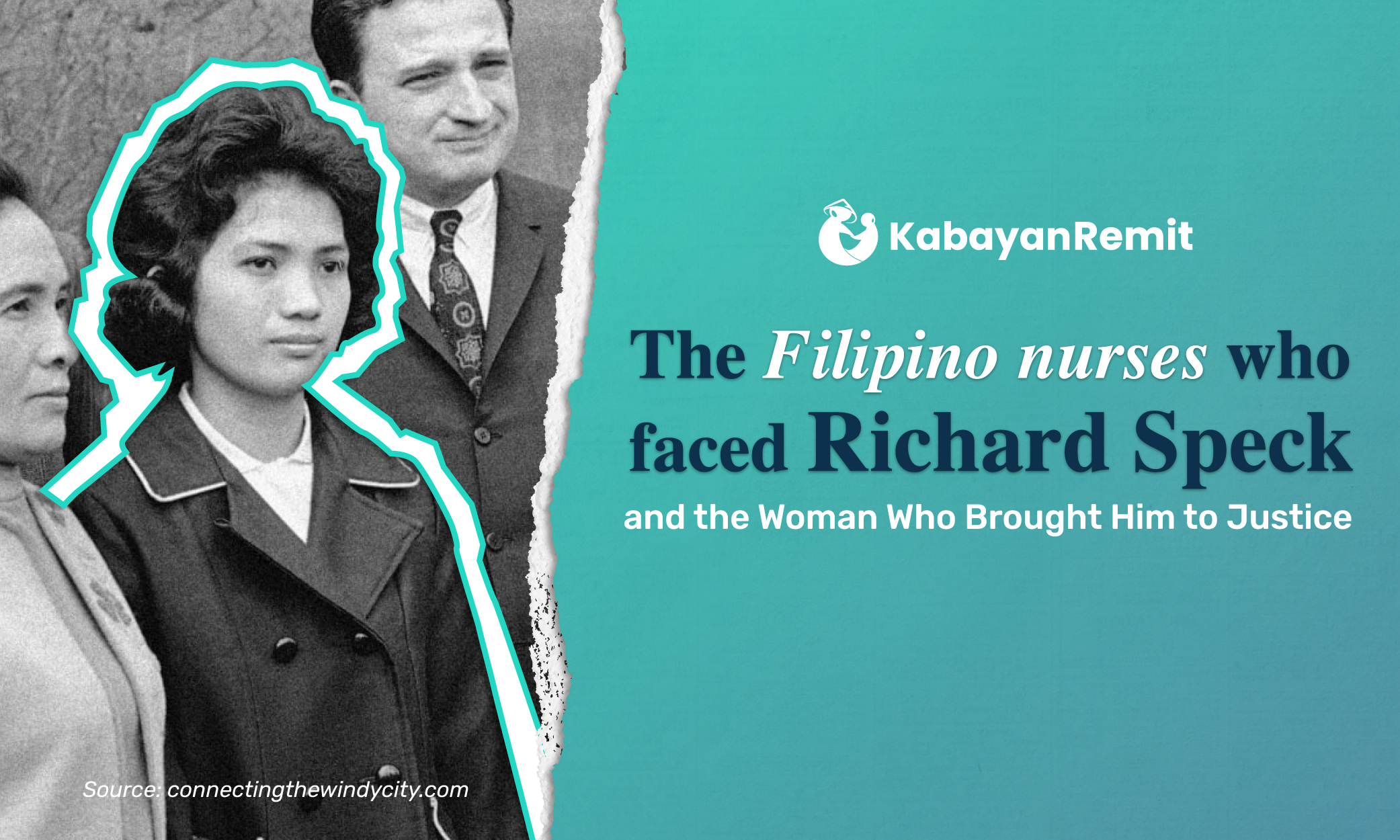
Le infermiere filippine che affrontarono Richard Speck e la donna che lo portò alla giustizia
Nota: This article discusses a historical event and may contain sensitive themes.
In the early morning of 14 July 1966 in Chicago, Illinois, 23-year-old Corazon Amurao became the lone survivor of Richard Speck, America’s first mass murderer. The Filipino exchange nurse survived by crawling and hiding under a double decker bed while Speck was distracted with his other victims.
Hours later, Amurao gingerly emerged from her hiding spot and realized her eight housemates were gone.
Among them were two Filipino nurses, Valentina Pasion and Merlita Gargullo. They and Amurao had only been in the US for several weeks.
Gloria Davy, Patricia Matusek, Nina Jo Schmale, Pamela Wilkening, Suzanne Farris, and Mary Ann Jordan also fell victim to Speck that night. They were all in their 20s and were just starting their careers as nurses.
The three Filipino nurses of 2319 East 100th Street
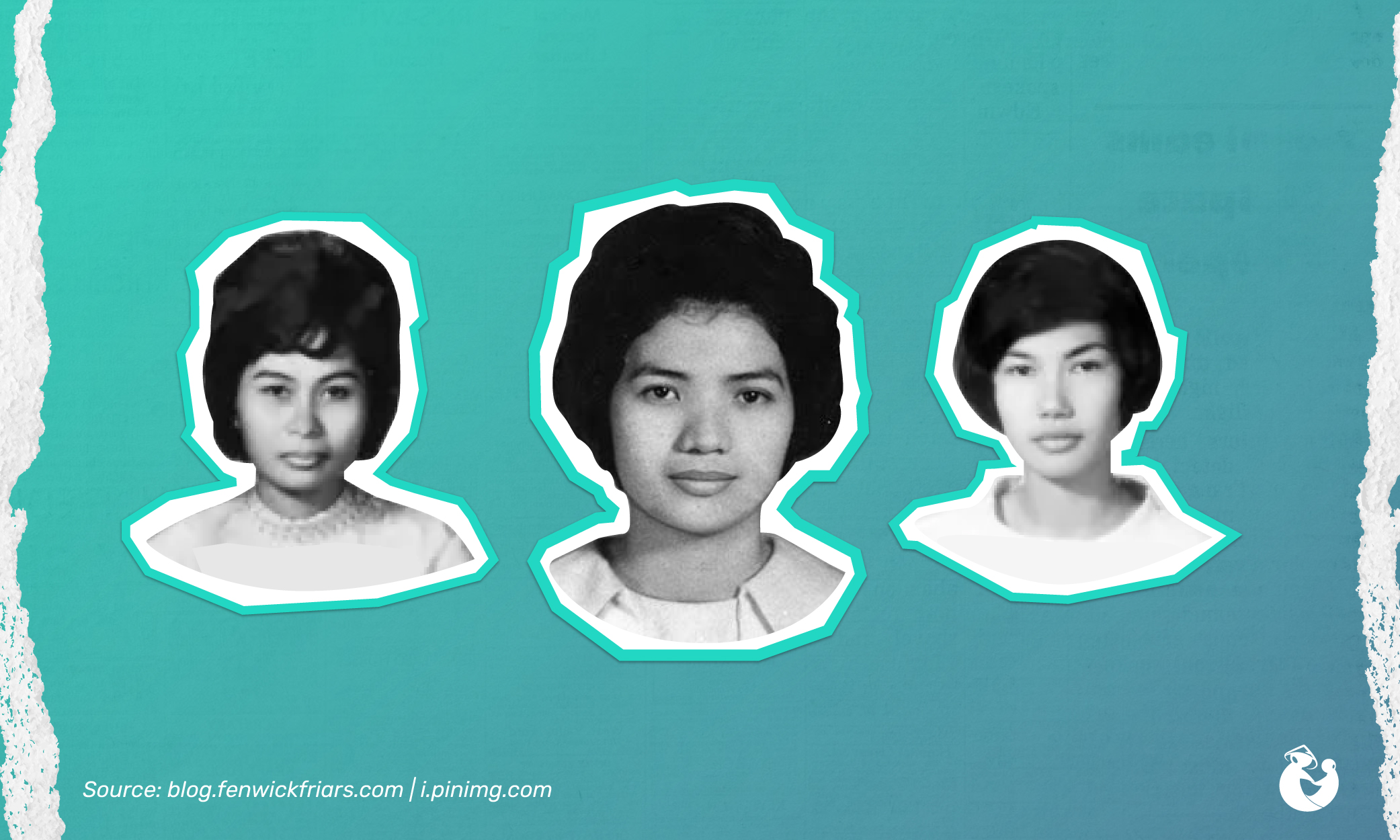
Amurao, Pasion, and Gargullo were three young Filippini who worked as exchange nurses at the South Chicago Community Hospital. All three lived in what would later become the scene of the crime: 2319 East 100th Street.
Amurao, a Far Eastern University alumna and native of San Luis, Batangas, was known for her adaptability and her grace under pressure. These would come in handy on the night of the crime and in the months leading up to Speck’s arrest and conviction.
In the Philippines, 23-year-old Pasion had graduated in the top 10 of her class in Manila Central University. A lawyer’s daughter, she earned a reputation among colleagues as a great cook.Before the crime, Pasion had written her parents and promised to send some money to fix their home in Isabela.
The daughter of a doctor in Mindoro, 23-year-old Gargullo graduated from Arellano University. Her fellow nurses remembered her beautiful singing voice and the delicious adobo and pancit she would cook for them.
The murder of Pasion, Gargullo, and their roommates shocked the world with its senselessness.
Explaining why he committed what was dubbed as America’s crime of the century, Speck merely said, “It just wasn’t their night.”
But luck was on one nurse’s side. Another Filipino who would have been Speck’s 10th victim had she not gone home that night.
Luisa Silverio
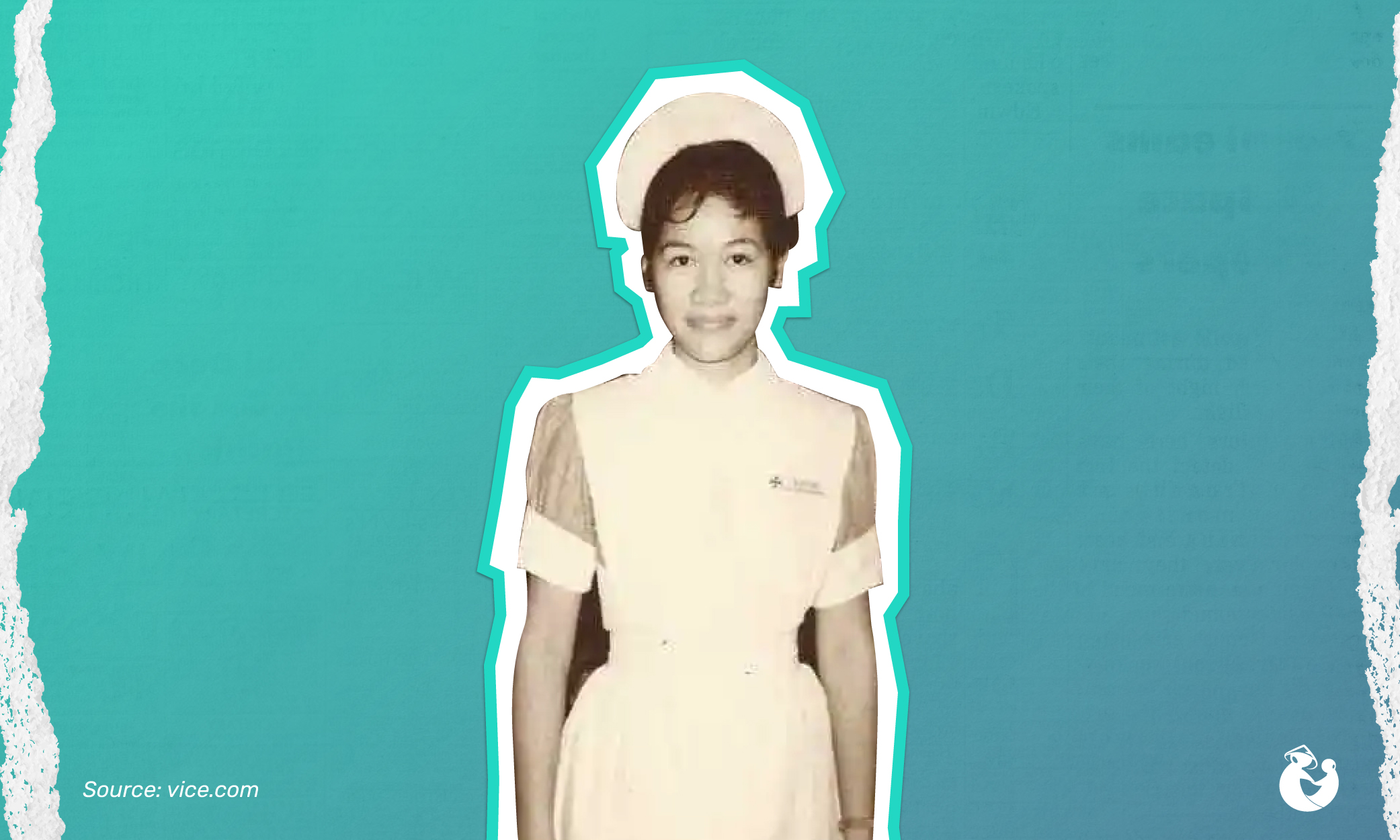
Just hours before Speck arrived, Filipino exchange nurse Luisa Silverio and her colleague and friend Pasion were doing each other’s nails at Townhouse 2319.
While they talked about homesickness, Pasion planned to cook pancit for dinner and invited Silverio to stay the night.
Silverio then walked back to her nearby apartment to write home and pack for the sleepover. While she was there, the community hospital phoned and requested her for a shift the next morning.
With work changing her plans, Silverio walked back to Townhouse 2319 to personally back out of the sleepover.
She rang the front doorbell. No answer.
She tried the back doorbell. Silence.
When no one got the door, Silverio rang the front doorbell one last time. Nothing.
Assuming no one was home, Silverio returned to her apartment.
In court records, Amurao would recall hearing a doorbell, going downstairs with Speck and another housemate to respond, and seeing no one at the door. Silverio had likely gone to the back to ring the second doorbell when Speck opened the front door.
After her first doorbell, Speck ignored the succeeding two rings until Silverio finally went home.
“[She] inadvertently courted death three times and escaped unscathed,” wrote Silverio’s grandniece Ysabel Vitangcol for Vice.
Unlike Silverio, Mary Ann Jordan was not as lucky. She slept over at Townhouse 2319 that night.
Unsure if speaking out would affect her nursing career and her dream of moving to the United States, Silverio would not share her story with the public for over 50 years.
Years later, she said the crime and the loss of her friends and colleagues broke her heart too.
Silverio said to Vitangcol, “I was traumatised. It was devastating. All my fellow nurses and I did was cry.”
This was not what she, Pasion, Gargullo, Amurao and their fellow Filipino nurses had imagined for themselves when they left the Philippines to work as nurses in the US.
Filipino nurses in the US
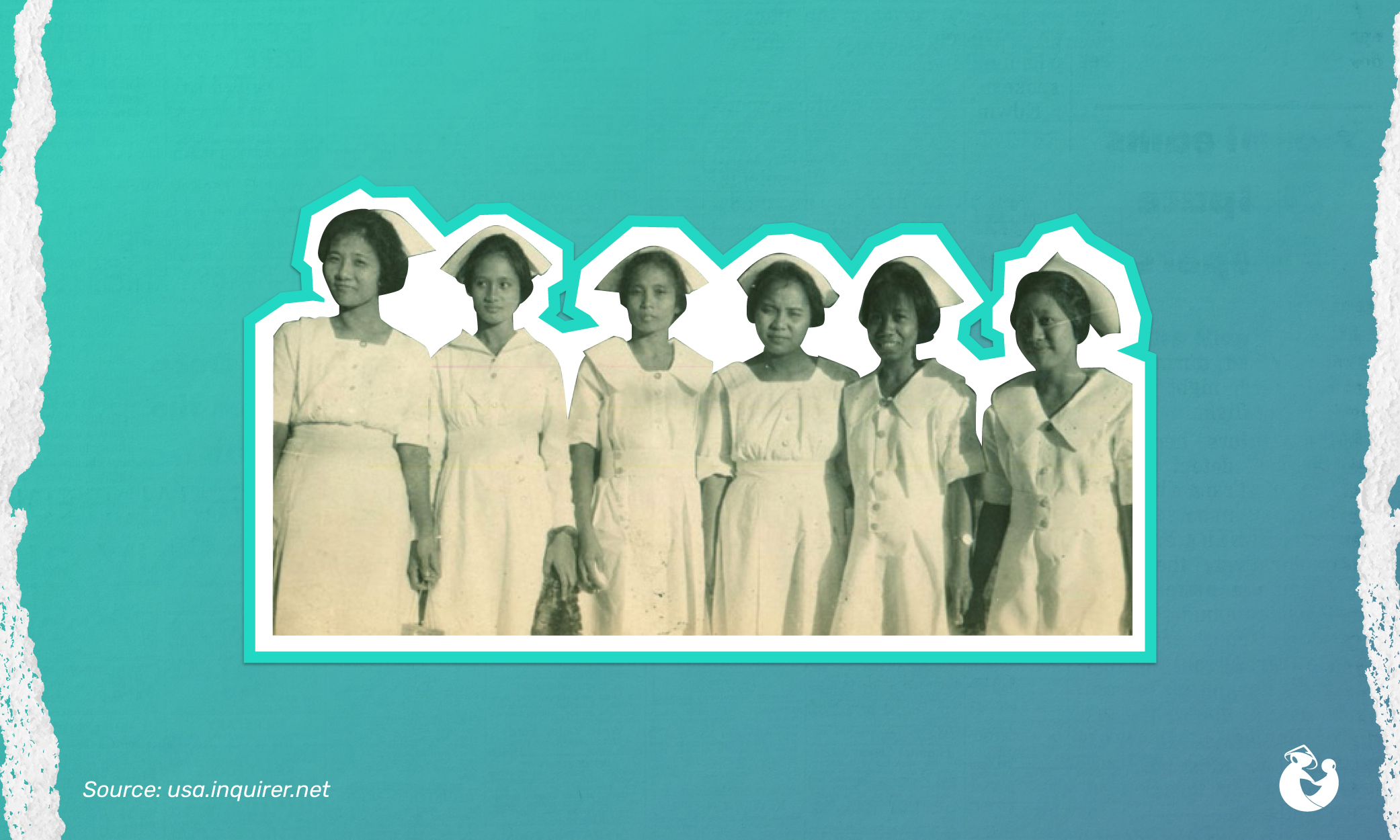
“After the U.S. colonized the Philippines in the late 19th century, the country has relied on Filipino health care workers to mend the staffing gaps in America’s patchwork health care system, especially in times of medical crisis,” wrote Paulina Cachero in an article for Time.
With the exception of colonial and missionary-run hospitals, there were few medical facilities who could care for American soldiers suffering from sickness and infection at the start of the American colonial period in the Philippines.
Thus, the US set up schools and hospitals to produce more healthcare workers in the archipelago.
Tra le Infermiera filippinas the colonial government trained, a select few travelled to the US to hone their skills, eventually replacing their American bosses in schools and hospitals when they returned to the Philippines.
To many Filipinos at that time, nursing was the career path to respectability and financial stability.
Then with nursing shortages after World War 2, the US Exchange Visitor Program opened its doors to more Infermiera filippinas in 1948. The program allowed foreign-trained nurses to gain experience and work in America for two years.
By the 1960s a second door opened for Infermiera filippinas.
The Immigration and Nationality Act created a path for visiting Infermiera filippinas to become permanent residents in the US at a time when American hospitals were struggling to care for the many patients availing healthcare via Medicare and Medicaid.
Meanwhile, the 1960s Filipino government under then president Ferdinand Marcos Sr. pushed for Filipinos to work abroad and send money to the Philippines as a way to bolster the national economy.
It was during this time that Amurao, Pasion, Gargullo, and Silverio entered the US as exchange nurses.
And it was in this decade that Amurao would become the key witness who would put Speck in prison and bring justice to her friends.
Standing up to Speck

“Perhaps never in the history of the Chicago police has the key to a murder rested more on the one slender thread of a girl’s memory of a night of horror,” wrote Noble DeSalvi for The Daily Calumet barely two days after the crime.
Police had to hope Amurao could remember everything from that night—despite enduring what could cause anyone of a weaker temperament to fold.
At around 11 p.m. on 13 July 1966, just as she was about to call it a night, Amurao heard knocking at her bedroom door. She opened the door to the sight of Speck brandishing a gun and knife.
Amurao and her roommate then ran to another friend’s room and hid in a closet. But minutes later, a housemate coaxed them out of hiding, saying Speck would not hurt them.
He did.
Eight nurses died that night, each picked out by Speck from a single room where he had gathered all his scared victims. Only Amurao survived by inching her way under a double-decker bed, even though Speck had tied her hands and ankles with torn bedsheet strips.
She stayed hidden for five hours, witnessing Speck take her friends one by one.
At 5:30 a.m. the next day, almost three hours after Speck had left the scene, Amurao untied herself and crawled out of her hiding spot.
Horrified by the sight of her departed friends, Amurao went onto a window ledge and screamed for help.
Barely a day after witnessing the crime, Amurao spoke to Chicago police for two hours. She provided details for a police sketch of Speck that made rounds in the media. She also identified Speck from a photo line-up.
But among the biggest clues she gave the police was her memory of the “Born to Raise Hell” tattoo on Speck’s arm.
The press ran the story.
Quickly after, a doctor treating Speck for self-injury spotted the said tattoo and called the police.
And on 19 July, Amurao faced Speck in his hospital room and confirmed his identity to the police.
Less than a year later, she stepped down from the witness stand and pointed Speck out to a judge and jury in Peoria, Illinois on 6 April 1967.
She said, holding her index finger just inches from Speck’s face, “This is the man.”
Il late William Martin, lead prosecutor in the case against Speck, said:
“Most witnesses would say, ‘He’s the man in the black suit, etc., or point to him from the witness stand. Cora—and this was to everyone’s amazement, mine more than anybody else—unlatched the door, stepped down from the witness stand, walked across the courtroom, went to the table where Speck was seated. Went right up to him and took her finger within two inches of his forehead, pointed at him and said, ‘This is the man.’ And pandemonium erupted briefly.”
“It was the most dramatic moment I’ve ever seen in a courtroom before or since,” he said.
Despite her trauma, Amurao spent hours on the stand recounting the crime and facing cross examination.
Twelve days later, the jury found Speck guilty of murder after only 49 minutes of deliberations.
He was sentenced to death in June 1967 but was resentenced to eight consecutive life terms in the 1970s following a US Supreme Court ruling. He spent the rest of his life in prison and died of a heart attack in 1991.
Corazon Amurao now
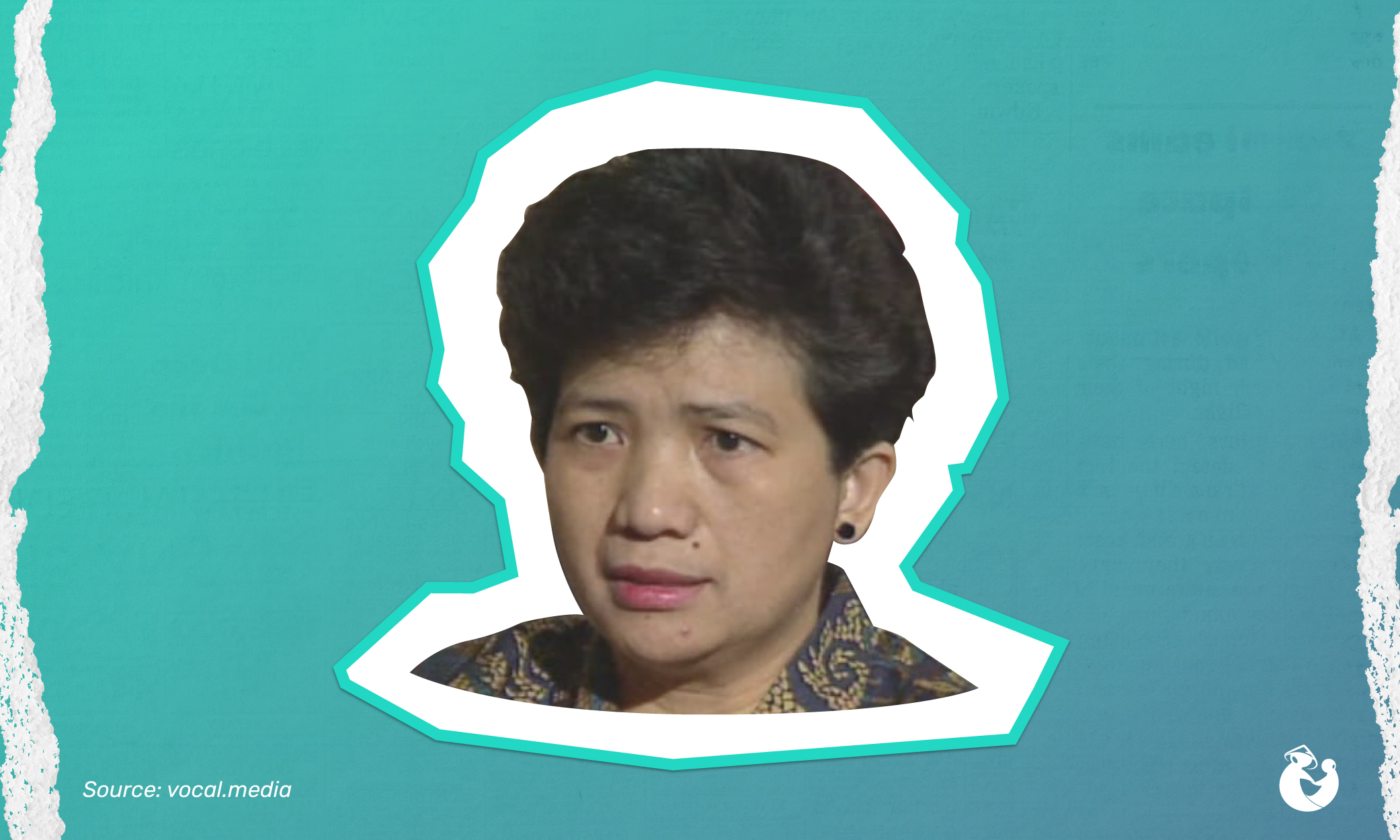
After the trial, Amurao returned to the Philippines with a fourth of the $10,000 reward for her part in convicting Speck.
She had a brief stint in local politics when she ran for councillor in San Luis, Batangas under the Liberal Party banner in 1967.
In 1969, Amurao married Alberto Atienza in the Philippines. The couple moved to the US in the 1970s.
There, Amurao maintained a private life and built a career as a critical care nurse in Washington, D.C. until her retirement in 2013.
While working as a nurse, Amurao raised two children, Abigail, who took up the same profession; and Christian, who became a certified public accountant.
Amurao is now a proud grandmother to six grandchildren, but she still bears scars from that fateful night.
Her courage and legacy
“She showed the indomitability of her spirit by continuing her path as a nurse and dedicating her life to helping others and raising a family, but you can never get something like this out of your life,” said Martin to Rosemary Sobol of the Chicago Tribune in 2016, five decades after the crime.
Amurao said something similar in a 1991 interview with ABC 7 Chicago, one of her only interviews after the crime: “After that night, I’m always scared, you know. I’m not that kind of person, because I’m always a happy person. But then after that night it seems like he [took] some of my happiness.”
Years later, Sobol reported Amurao still has nightmares about Speck coming for her.
But Amurao has held on to her faith.
According to Sobol, Amurao emailed former prosecutor Martin, saying, “”I think there was somebody up there who was hiding me from [Speck]. God was so nice.”
It was an echo of something she told ABC 7 Chicago in 1991: “I think [God] spared me so that I can do more things.”
And more things she did.
Informazioni su Kabayan Remit
Kabayan Remit is an online money transfer app that helps OFWs safely send money to trustworthy banks, e-wallets, and cash remittance centres in the Philippines. It is available in the United Kingdom and Canada and will soon be available in Illinois, Florida, and Arizona.
To learn more about our features and to try our free exchange rate calculator, click qui.
